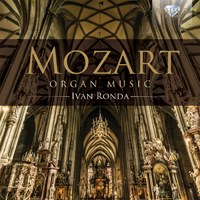| No. 307 of the ongoing ITYWLTMT series of audio montages, which can be found in our archives at https://archive.org/details/pcast307 |
=====================================================================
This week’s
“bonus” podcast for the fifth Friday of March features a series of works for
piano and orchestra in a single movement – not quite concertos, but in the
concertante form.
One of the
first works on the playlist, Albeniz’s Rapsodia Española, is actually
in five movements played without pause. Albéniz was never entirely confident
when writing for orchestra, and it is known from surviving correspondence that
he asked his friend Tomás Bretón to help with the orchestration of the
Rapsodia; it has sometimes been performed using orchestrations made after
Albéniz’s death, by George Enescu (1911) and Cristóbal Halffter
(1960). According to my research, the version retained today has the Enescu
orchestration.
From the
same CD, Canadian pianist Angela Cheng and the Calgary Philharmonic perform
another one-movement piece of Spanish origin, Turina’s Rapsodia
Sinfonica. The orchestra is limited to strings and the piano sometimes
falls back into an accompaniment role; yet it's full of Iberian atmosphere,
particularly in the second half, and like Falla's Nights in the
Gardens of Spain, it sensitively evokes a nocturnal scene in Andalusia, the
gypsy-dominated area of southern Spain.
From Spain,
we now go to Poland, and one of the few pieces for piano and orchestra by Chopin.
Rondo à la Krakowiak (subtitled “Grand Rondeau de Concert”) was written in 1828
and dedicated to Princess Anna Zofia Sapieha, whose mother, Izabela
Czartoryska, was influential in shaping the burgeoning Romantic aesthetic in
Poland. Its title derives from a Renaissance-era Polish dance, said to be
associated with courtship practices. Chopin, always showing an interest in
native dances, as demonstrated by his numerous mazurkas and polonaises, was
well-suited to adapting folk-like music to the concert hall.
It was Liszt
who found Fauré’s Ballade pour piano seul (1879) ‘too difficult’,
referring to the version for solo piano before its later transformation in a
more popular and lucid version for piano and orchestra. Presumably he meant
that the writing was intricate without being virtuosic, that the material was
too fragile and exquisite for public consumption. Even Liszt, a dazzlingly
perceptive and generous critic, must have been baffled by the presence of so
many difficulties in a piece unlikely to win prolonged plaudits.
Speaking of
Liszt, the montage closes with his Fantasia on Hungarian Folk Melodies,
commonly known in short form simply as the Hungarian Fantasy – an arrangement
for piano and orchestra of his Hungarian Rhapsody No. 14. During Liszt's
lifetime, his Hungarian Rhapsodies were among his most popular works. Because
of this popularity, he may have been under pressure to produce versions of them
for piano and orchestra. The present work is the only such work that Liszt is
known to have produced.
I think you will love this music too.







:format(jpeg):mode_rgb():quality(90)/discogs-images/R-8717495-1467242944-8019.jpeg.jpg)


:format(jpeg):mode_rgb():quality(90)/discogs-images/R-3103204-1372966378-2183.jpeg.jpg)



